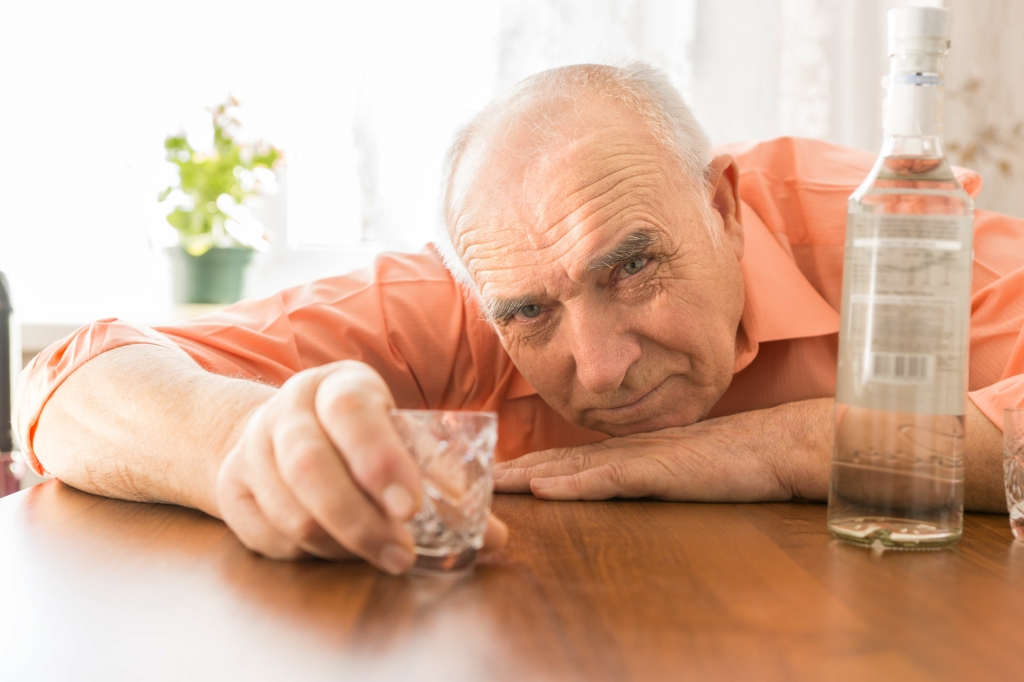As was the case for Marlatt’s original RP model, efforts are needed to systematically evaluate specific theoretical components of the reformulated model [1]. Although withdrawal is usually viewed as a physiological process, recent theory emphasizes the importance of behavioral withdrawal processes [66]. Current theory and research indicate that physiological components of drug withdrawal may be motivationally inert, with the core motivational constituent of withdrawal being negative affect [25,66]. Thus, examining withdrawal in relation to relapse may only prove useful to the extent that negative affect is assessed adequately [64]. Relapse poses a fundamental barrier to the treatment of addictive behaviors by representing the modal outcome of behavior change efforts [1-3].
International Gambling Studies
Relapse Prevention (RP) is another well-studied model used in both AUD and DUD treatment (Marlatt & Gordon, 1985). In its original form, RP aims to reduce risk of relapse by teaching participants cognitive and behavioral skills for coping in high-risk situations (Marlatt & Gordon, 1985). More recent versions of RP have included mindfulness-based techniques (Bowen, Chawla, & Marlatt, 2010; Witkiewitz et al., 2014). The RP model has been studied among individuals with both AUD and DUD (especially Cocaine Use Disorder, e.g., Carroll, Rounsaville, & Gawin, 1991); with the largest effect sizes identified in the treatment of AUD (Irvin, Bowers, Dunn, & Wang, 1999). As a newer iteration of RP, Mindfulness-Based Relapse Prevention (MBRP) has a less extensive research base, though it has been tested in samples with a range of SUDs (e.g., Bowen et al., 2009; Bowen et al., 2014; Witkiewitz et al., 2014). Harm reduction therapy has also been applied in group format, mirroring the approach and components of individual harm reduction psychotherapy but with added focus on building social support and receiving feedback and advice from peers (Little, 2006; Little & Franskoviak, 2010).
Marlatt’s relapse prevention model: Historical foundations and overview
Unlike substance addictions, behavioral addictions do not involve direct contact with brain synapses through the introduction of an exogenous ligand, but instead alter endogenous ligand functions. Neurotransmitter release may become dependent on repeated engagement in the behavior, which may lead to ‘withdrawal-like’ symptoms when the behavior is ceased (see Sussman, 2017 for further discussion of this issue). Accordingly, because some addiction-related symptoms (i.e., withdrawal, relapse, and salience/craving) only manifest (or manifest more strongly) under abstinence conditions, it is possible that they might be masked under non-abstinence conditions. In behavioral addiction research, retrospective and cross-sectional self-report questionnaires asking individuals whether they experience withdrawal symptoms, craving, or relapse are inherently limited if individuals generally do not engage in significant periods of abstinence in the first place. Instead, prospective studies of abstinence situations are particularly useful in allowing observation of these psychological phenomena as they may arise over an abstinence period. Naturally occurring periods of abstinence (e.g., intrinsically motivated cessation attempts) are useful for researchers to systematically observe where they do occur but may be rare depending on the behavior of interest.

1. Review aims
Those participating in VM were compared to a treatment as usual (TAU) group on measures of post-incarceration substance use and psychosocial functioning. Relative to the TAU group, the VM group reported significantly lower https://arifis.ru/work.php?topic=1&action=view&id=9024&topic=1 levels of substance use and alcohol-related consequences and improved psychosocial functioning at follow-up [116]. When you are feeling overwhelmed, your brain may unconsciously crave drugs as a way to help you feel better.
- Olanzapine was found to reduce alcohol-related craving those with the long-repeat VNTR (DRD4 L), but not individuals with the short-repeat version (DRD4 S; [100,101]).
- The abstinence violation effect (AVE) occurs when an individual, having made a personal commitment to abstain from using a substance or to cease engaging in some other unwanted behavior, has an initial lapse whereby the substance or behavior is engaged in at least once.
- Many people can relate to this feeling of guilt when they use a substance, like alcohol or marijuana, after promising themselves they wouldn’t.
- Seemingly irrelevant decisions (SIDs) are those behaviours that are early in the path of decisions that place the client in a high-risk situation.
- For gambling disorder, controlled gambling is increasingly being advocated as a viable goal alongside traditional abstinence treatment goals (e.g., Stea, Hodgins, & Fung, 2015).
A Lapse Vs. A Relapse

The AVE describes the negative emotional response that often accompanies a failure to maintain abstinence from drugs or alcohol. Kristen P. Lindgren is an assistant professor and licensed clinical psychologist in the University of Washington’s Department of Psychiatry and Behavioral Sciences. Her research interests include addictions, posttraumatic stress disorder, sexuality, and relationships. Her work focuses on implicit (i.e. nonconscious or automatic) cognitive processes that contribute to the development and maintenance of maladaptive behavior and psychopathology. Support for her work has been provided by the National Institute on Alcohol Abuse and Alcoholism and the University of Washington’s Alcohol and Drug Abuse Institute. Understanding the AVE is crucial for individuals in recovery and those focused on healthier lifestyle choices.
- In another study examining the behavioral intervention arm of the COMBINE study [128], individuals who received a skills training module focused on coping with craving and urges had significantly better drinking outcomes via decreases in negative mood and craving that occurred after receiving the module.
- Experts generally recommend that SUD treatment studies report substance use as well as related consequences, and select primary outcomes based on the study sample and goals (Donovan et al., 2012; Kiluk et al., 2019).
- Implicit measures of alcohol-related cognitions can discriminate among light and heavy drinkers [58] and predict drinking above and beyond explicit measures [59].
- Tonic processes include distal risks–stable background factors that determine an individual’s “set point” or initial threshold for relapse [8,31].
- This preparation can empower a client to avoid relapse altogether or to lessen the impact of relapse if it occurs.
Still, you should also realize that relapse isn’t guaranteed, especially if you stay vigilant in managing your continued recovery. There may be an internal conflict between resisting thoughts about drugs and compulsions to use them. There is a possibility that you might rationalize why you https://gothic.net/game-of-thrones-the-winds-of-winter-drinking-game-edition/ might not experience the same consequences if you continue to use. It is not necessarily these natural emotions that cause emotional relapse, but how you cope with them, that does. A mindset shift caused by triggers or stress may lead you to take that drink or start using drugs again.
The dynamic model of relapse assumes that relapse can take the form of sudden and unexpected returns to the target behavior. This concurs not only with clinical observations, but also with contemporary learning models stipulating that recently modified behavior is inherently unstable and easily swayed by context [32]. While maintaining https://starominskaja.ru/main/5005-v-rossii-vstupaet-v-silu-zapret-na-kurenie-v-uchebnyh-zavedeniyah-ostanovkah-i-vokzalah.html its footing in cognitive-behavioral theory, the revised model also draws from nonlinear dynamical systems theory (NDST) and catastrophe theory, both approaches for understanding the operation of complex systems [10,33]. Detailed discussions of relapse in relation to NDST and catastrophe theory are available elsewhere [10,31,34].
- For example, I am a failure (labeling) and will never be successful with abstaining from drinking, eating healthier, or exercising (jumping to conclusions).
- Self-efficacy often increases as a result of developing positive addictions, largely caused by the experience of successfully acquiring new skills by performing the activity.
- Examples of high-risk contexts include emotional or cognitive states (e.g., negative affect, diminished self-efficacy), environmental contingencies (e.g., conditioned drug cues), or physiological states (e.g., acute withdrawal).
- Abstinence tasks also require practicing self-control, which might increase capacity for self-control strength (Muraven & Baumeister, 2000), and successful abstinence attempts might increase abstinence/avoidance self-efficacy (e.g., Hodgins, Peden, & Makarchuk, 2004; Kraus, Rosenberg, Martino, Nich, & Potenza, 2017).
- However, it can sometimes lead to the thought that you have earned a drink or a night of using drugs.
First, in the context of pharmacotherapy interventions, relevant genetic variations can impact drug pharmacokinetics or pharmacodynamics, thereby moderating treatment response (pharmacogenetics). Second, the likelihood of abstinence following a behavioral or pharmacological intervention can be moderated by genetic influences on metabolic processes, receptor activity/expression, and/or incentive value specific to the addictive substance in question. Third, variants implicated in broad traits relevant for addictive behaviors–for instance, executive cognitive functioning (e.g., COMT) or externalizing traits (e.g., GABRA2, DRD4)–could influence relapse proneness via general neurobehavioral mechanisms, irrespective of drug class or treatment modality. Some researchers propose that the self-control required to maintain behavior change strains motivational resources, and that this “fatigue” can undermine subsequent self-control efforts [78]. Consistent with this idea, EMA studies have shown that social drinkers report greater alcohol consumption and violations of self-imposed drinking limits on days when self-control demands are high [79].
